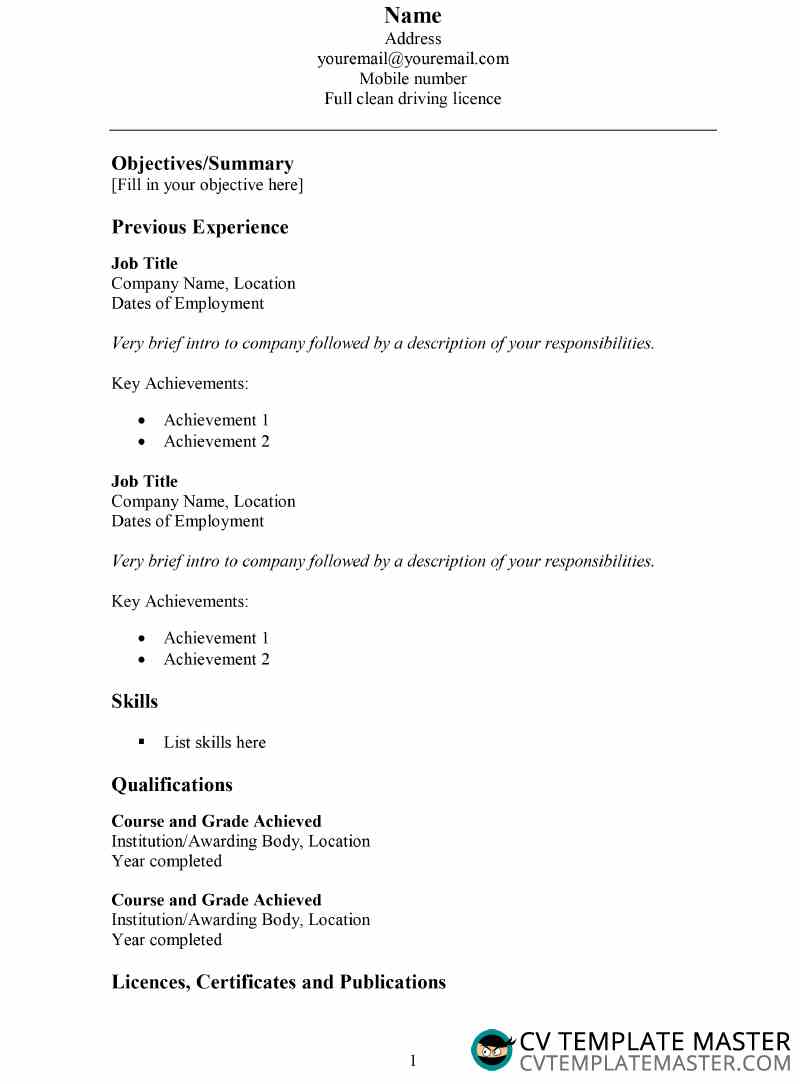Template details:

3 fast ways to write a professional CV
When you’ve been working on any document for a while, it can be really easy to overlook errors. The amount of time and effort that goes into writing a CV can often leave you exhausted. A few mistakes are bound to creep in, and it’s completely understandable.
Did you know that spelling and grammatical errors are the most common and worst mistake made on a CV? A study in Australia was conducted which showed that up to two thirds of job seekers reduced their chances of success with spelling errors. For more information, click here.
Here are 3 fast ways to write a professional CV…
1. Don’t trust your own eyes
Although you can run a spell check on MS Word, unfortunately it won’t pick up everything. For example, missed words or instances where you have used the wrong word but spelt it correctly. To ensure your CV is free of mistakes, ask one or two people you know to look over your CV for errors. Request their feedback on not just your grammar, but also the quality of your CV.
Tip – As an added bonus, why not also ask them if they would be happy to conduct a mock interview with you. See if they are able to come up with tough questions of their own after reviewing the job description. Practice makes perfect, and those interview nerves should not hold you back. Here’s how to set up and conduct a mock job interview.
2. Use a suitable font
There are thousands of quirky fonts on the web today, but will using them on your CV help or hinder your application?
This really comes down to the job you’re applying for. A creative role like graphic design may require a more creative approach. But an office or admin job may require a more traditional and formal font.
If you’re not sure, stick to favourites such as Helvetica, Garamond or Times New Roman and avoid departing too far from the norm. The font size is also very important, as too small could make it difficult to read. A font which is too large could take up valuable space.
3. Write an opening statement that packs a punch
Under your name and personal details, most CV templates have a space for an objective or personal statement. Both are the same but they are sometimes called different names, so choose whichever you like. If your CV template doesn’t have this space, consider making room for it.
This is a crucial part of your CV but so often ignored by job seekers. In 3 lines or so it’s your chance to tell recruiters who you are, what you have to offer and why you fit the job description. With just a few seconds to look through each CV, there’s no better place to catch the employer’s eye.
For some additional help on writing your personal statement, please visit our article – Writing your personal profile CV section.